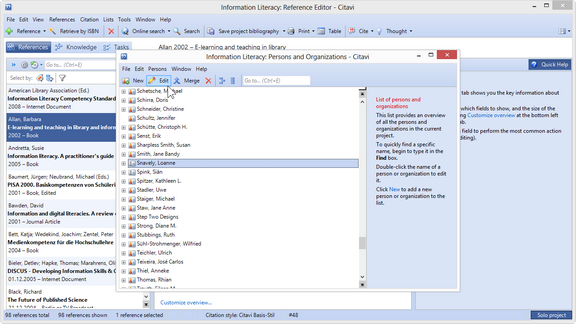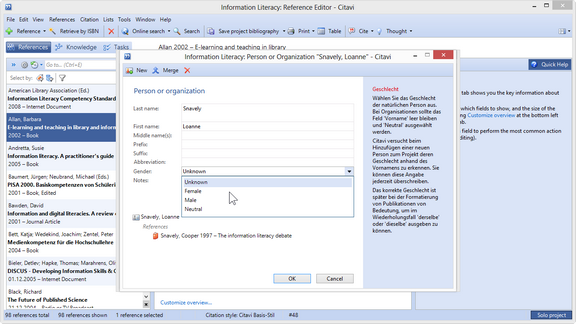Entering Author Genders
The following chapter is only pertinent if you use a citation style that uses abbreviations that depend on the author's gender, such as "id." or "ead." These abbreviations are much more common in German-language styles, as shown in the following examples:
- If the author of a contribution is the same as the editor of the book in which the contribution appears, the name should only be listed once. Example: Schmidt, Petra: Mein Düsseldorf. In: Die verbotene Stadt, hrsg. von ders. Köln 2012.
- If more than work by an author appears in the bibliography, the author's name should only be listed the first time. Example:
Müller, Renate (2010): Statistik für Anfänger. Berlin.
dies. (2012): Statistik für Fortgeschrittene. Berlin.
Citavi can do this automatically, as long as two prerequisites are met:
- The gender needs to be correctly entered for each author
- A special condition needs to be added to the citation style so that the gender field is checked and the abbreviations are accurately applied.
The following replacements can be made:
Latin |
German |
|
1 female author |
ead. (eadem) |
dies. (dieselbe) |
1 male author |
id. (idem) |
ders. (derselbe) |
Multiple female authors |
eaed. (eaedem) |
dies. (dieselben) |
Multiple mixed-gender authors |
eid. (eidem) |
dies. (dieselben) |
Citavi will automatically assign a gender to an author based on the author's first name (this feature requires an active internet connection). If the gender cannot be determined, you may need to add the gender yourself. You may also need to make corrections to the automatic gender identification:


